Impetus of Imperfection
02.04.15
Tobi Vail, member of Bikini Kill and author of the zine Jigsaw, describes zine making as “the impetus of imperfection.” Importantly, Bikini Kill propelled zine-making into the mainstream. She writes, “We didn’t have our lettering typeset by a professional. We did it ourselves using old typewriters, Sharpies, rub-off letters and stencils. We crossed stuff out and rewrote it and left it looking messy. Words fell off the page and got taped back on. You can see the tape, you can see our fingerprints and you can see coffee stains.”
Like myself, Atlanta zinester Judith Jones came to zinemaking via the riot grrrl movement spurred by Vail. I first met Jones at the People of Color Zine Project table during the first Atlanta Zine Fest. Judith says, “I started making zines in high school when I came to feminism. Zines provided a platform where I could express myself without restriction or censorship.” In Judith’s Tom Girl series, the personal is deeply political. As such, a relatable exasperation is apparent in Judith’s writing. She explains, “Like many things, this zine was originally fueled by anger and a growing frustration with today’s society.” In fact, zines are a hotbed of undervalued experiences and identities, motivated by a dearth of representation.
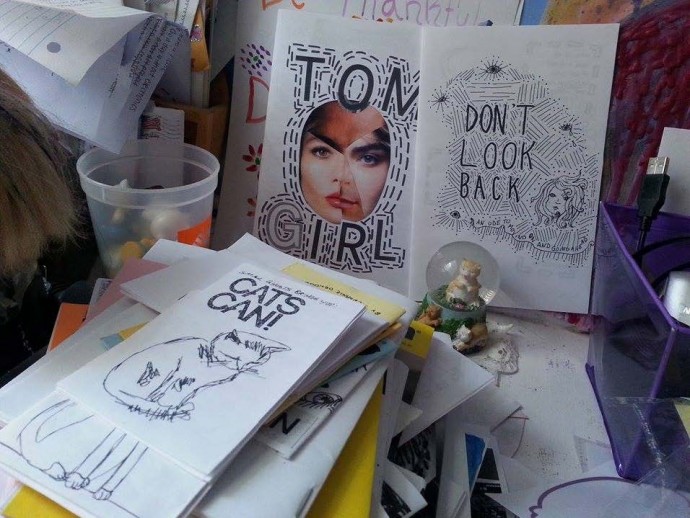
Judith Jones zines
In her zine Hypologia, Katherine Paist beautifully captures this desire as manifest in language itself. “I desire rupture in reality—be it the riot, the orgasm, or the shot that gets me drunk—I desire disruption in/of language, the kind we aren’t rushing to bring into meaning.” Her creative nonfiction is guided by currents of literary and linguistic theory. She creates an affective praxis that marries academia to lived experiences.
Perzines, like some of Katherine’s work, are particularly significant to zine culture (the per stands for personal). These zines are most closely aligned with diary narratives; blogs are arguably an extension of the perzine. “The strongest perzines are relatable, empathetic, healing–not just for the writers, but also for the audience,” offers Sunni Johnson, a lifelong zinemaker since its apex in the ‘90s. As a young girl, Sunni’s zines were full of the angsty, humorous musings (“one was called Mission Destroy and had a lot of vulcan philosophy and anti-tv stuff”) of a teen figuring things out with her friends. Her current work includes Cum Manifesto, a pro-sex feminist porn zine, and Pantylions, a perzine commentary on women’s culture. “I feel like sexuality and creativity come from and use the same energy. I’m really interested in the aesthetic expression of sexuality.” Sunni’s work demonstrates crossovers between perzines, political zines, and art zines.
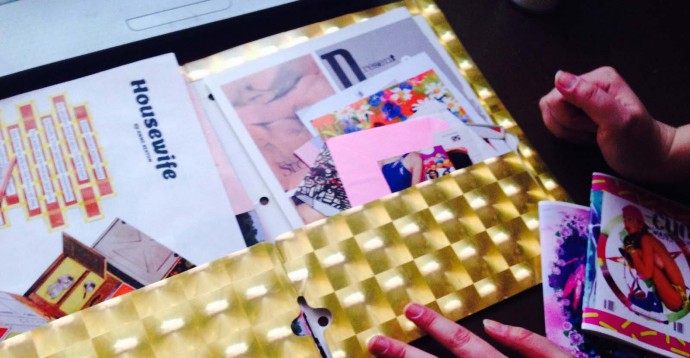
Sunni Johnson zines
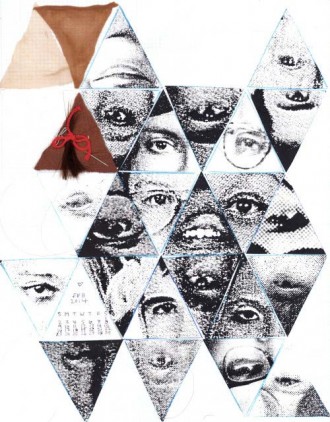
Edilburga Gonzalez image
But, DIY groups are not dam systems of hoarded print creativity–they very much exist in tandem with digital media. “I mean, I’m no fuckin’ Luddite,” Matt Hatcher asserts. “But I felt like I spent all this time on my phone compiling lists of shows that I wanted to go to. I thought, ‘What if I just print out this list and give it to other people? To get them off their phones too. You don’t have to be on the Internet all the time.’” Many flyers were collaborative works. “It was also a way to hang out with people if they wanted to help,” he explains.
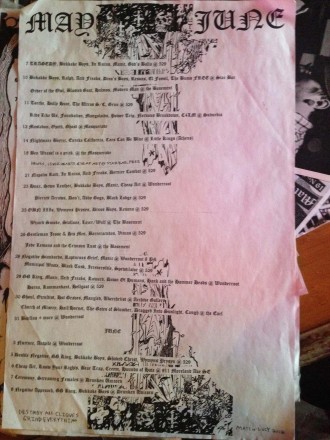
Matt Hatcher show list
For half a decade, Matt’s DIY show lists have been a covetous staple of Atlanta’s punk venue and house show circuit. “It has limited appeal,” he surmises of the tabloid-size flyers. “I never hung them up because no venue wants to list competing shows. And not that many people want to take home a giant flyer.” With its blunt achromatic scheme, collaged backgrounds, and sliced up lines of text, the flyers look like they could be copied from a zine at The Embassy house in early ‘90s D.C. The look is intentionally classic, and the composition is effortlessly balanced. In one, an ostentatious lion’s skull—pointed, opulent fangs hanging wildly open—decoratively bordered by a scattered scan of softly oval prescription meds is one example of Matt’s aesthetic outcome. The funness of punk—of building your own models of positive valence, of being, as Matt says, “comfortable with your flaws”—is hyper evident in his work. As a list of Atlanta punk shows and the bands that played them, he embodies the archival importance of engaging in self-produced media.
John Lloyd Hannah, singer of situationist anti-punk band Bataille and contemporary zinester, says that “on a personal level I’ve always been attracted to a certain level of refinement. Respectability can be seen as quaint or elitist. I didn’t take the path to punk of going to shows as a 14 year old; I read.” Matt’s flyers utilize classic punk zine aesthetic to help build tangible communities. John’s work echoes punk differently: “Punk is very anti-establishment. I view my work as going against the grain in that it’s not what punk is supposed to look like. I like that punk encourages everyone to follow their own creative passions.”
Matt and I agreed that when punk media is too polished, it can feel alienating. However, the decorous typography and sophisticated layout in John’s zines never feels estranged. The content is far from restrained. Printed on linen paper blend, he writes
May I then be as a feasting rat
amongst the wretched flesh of the Decaying God
and count myself
amongst the Saints and the filth,
the ruin and the flower.
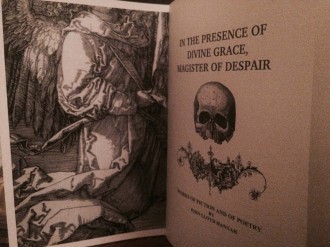
John Lloyed Hannah zine
Here, the Symbolist poetry of Rimbaud and Baudelaire is evident–relishing the decadent and libertine while indulging romantic lyricism. Punk might not be immediately self-evident at the forefront of his practice, but John smartly turns the notion of outmoded on its head in a decidedly self-defining way. His zines rightly embody Greg Graffin’s definition that punk is “a process of questioning and commitment to understanding that results in self-progress [that] flowers into social evolution.” John’s unapologetic harkening to situationist theory is steeped in a larger political objective, namely, like many good zines, questioning all systems of power.